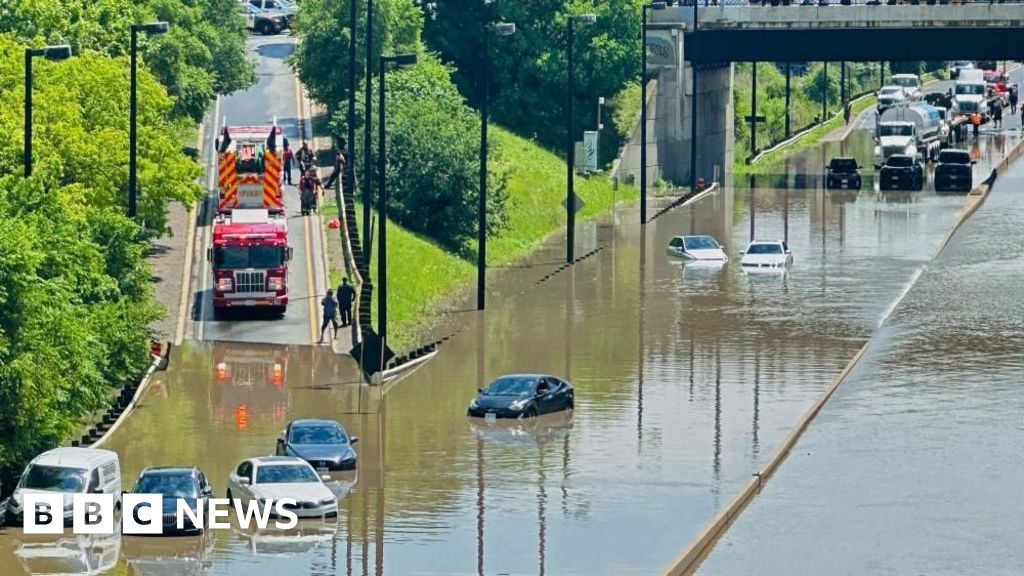Bussiness
Toronto reels from floods and power cuts after severe storms

Record rainfall from three huge storms has flooded parts of Toronto, cut power and left drivers stranded on the major motorway through the city.
Environment Canada reported that almost 100mm (4in) of rain fell on Toronto on Tuesday, surpassing the city’s daily record set in 1941.
Images and videos showed severe flooding across the city, cars nearly submerged, and water cascading down the staircases at Union Station.
The storm left more than 167,000 customers without power, according to Toronto Hydro.
Several flights were also delayed or cancelled out of Billy Bishop Airport, on the Toronto Islands in Lake Ontario.
The Don Valley Parkway, a major motorway that runs adjacent to the Don river, was blocked in both directions by flooding. Ontario Highway 410 was also closed, with police anticipating that it will not open up for another day as crews clean up.
Authorities said they have rescued at least 14 people, including one person who had to be plucked from their car’s roof.
Toronto’s fire service received numerous calls from people trapped in lifts, after large areas of city centre lost power during working hours.
Meteorologists said that Tuesday’s record rainfall was due to three consecutive storms that fell on the city.
“We had 25 per cent more rain in three hours than we’d have normally in the whole month of July with all the thunderstorms and systems that moved through,” meteorologist Dave Phillips told local news station CP24.
The Toronto and Region Conservation Authority warned that areas near shorelines, rivers and streams in the city are especially prone to flooding. There are more than a dozen rivers and streams in Toronto, making it vulnerable to rising water levels.
Toronto’s mayor Olivia Chow said she did not know why the Don Valley Parkway, which is prone to flooding, was not closed earlier in the day.
She added the city was “massively investing” in clean-up efforts to ensure similar flooding does not occur in the future.
Toronto suffered from an intense and costly July storm in 2013 that left at least 300,000 people without power and more than 1,000 passengers needing rescue from a flooded train.








